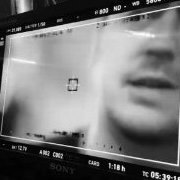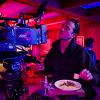Search the Community
Showing results for tags 'kinefinity'.
-
Pictures listed on my Facebook listing here - https://www.facebook.com/marketplace/item/904249070263231 *Price* £9000 ONO Camera is barely used and in amazing condition. ProAV overview - https://www.youtube.com/watch?v=NNi7Bv3MPJk Please do not ask to break up the kit, I can't do it. Kit Includes: 1 x Kinefinity MAVO LF 6K Cinema Camera 1 x Kinefinity KineMAG+ SSD 500GB 1 x Kinefinity KineBACK 3 1 x Kinefinity KineEVF Full-HD OLED Viewfinder 1 x PL Mount with END 1 x E mount (Passive) 1 x EF Mount 1 x Kinefinity PD KineBAT 75Wh Battery Package 1 x 2 bay charger (Sony BPU) 1 x Smallrig Cage 1 x Movcam Baseplate 1 x KineMON-5U2 Monitor Complete Pack 1 x Kinefinity 100W Power Cord 1 x Kinefinity Kine Power Cord (D-TAP) - L-Type 0.8m 1 x Solid Case Full Frame / Large Format CMOS Sensor The Mavo LF uses a completely new 6K CMOS imaging sensor with over 14 stops of latitude for detailed, cinematic images. 6K acquisition allows you the creative control to crop and manipulate your image when delivering in 4K, or to downsample to very sharp 4K images with a low noise floor. While its large format 36mm x 24mm sensor gives superb low light, depth of field and dynamic range for detailed and cinematic images. 6K ProRes and Raw recording to Internal SSD's Mavo LF allows for several raw recording options, CinemaDNG or .KRW files at either 3:1, 5:1 or 7:1 compression for pain free post production. You also get the option to record in all the flavours of Prores up to Prores 444XQ for projects where raw recording is not necessary. All of this is recorded internally onto 7mm SSD's. Removing the need for expensive and large external recorders. > 14 stops with Dual Native ISO Mavo LF uses a whole-new large format 6K CMOS image sensor featuring a Dual Native ISO of 800/5120. This allows it to capture low-noise and wide-latitude images in regular scenes or low-light environments easily. Opening up a whole new world of potential for filmmakers looking to push the boundaries of what is possible in their productions. High Frame Rates at High Resolutions With 6k recording up to 75fps, 4K up to 100fps and 2K up to 200fps in either Prores or CinemaDNG raw, Mavo's frame rates certainly don't disappoint. The frame rate can also be specified exactly to an accuracy of 0.001fps. These frame rates can be quickly changed on the fly with the use of presets, changing sensor crop, frame rate, resolution, shutter speed and codec with just the push of a button. This makes the Mavo LF very fast to operate for solo operators, as well as providing reassurance that your settings are exactly how you want them. Compact Modular Design Despite the high performance of the Mavo LF, the physical size of the camera is remarkably small. Plus coming in at just 990g, the core of the camera is not only small, its light as well. This means the Mavo LF is perfectly suited to gimbal and drone operators looking for the highest quality in the smallest package. With the addition of the Sidegrip, Kineback-W and interchangeable lens mounts, Mavo is a very modular platform. Enabling you to customise the camera to your exact requirements. The whole lineup for Kinefinity (Terra 4K, Mavo & Mavo LF) has the exact same physical dimensions, ensuring compatibility of accessories across the range. Interchangeable lens mounts The Mavo LF ships with a KineMOUNT. This proprietary mount is used to attach a variety of adapters, so you can use the lenses of your choice. The KineMOUNT is designed to be light with active electronic contacts, allowing it to work with PL mounting adapter with /i tech and new cordless EF mounting adapter, EF mounting adapter with KineEnhancer, Nikon F mounting adapter, Sony E adapter, PL/EF mounting adapters with electronic NS, and more. Stunning Images Both MAVO and MAVO LF can shot high frame rates at 6K resolution, with the same superior image quality. Both cameras give you more than 14 stops of latitude, pleasing skin tones and shadow details which are preserved perfectly. With 6K 3:2 aspect ratio, in addition to the conventional 16:9 and 17:9 standard aspect ratio, the CMOS sensor can also provide a variety of image formats, such as 4:3 & 6:5 S35 anamorphic shooting. Even open gate 6016×4016 is an option, recording up to 24 million pixels! Smooth Post-workflow: ProRes444 and Compressed cinemaDNG Mavo LF allows for either Prores or Raw recording to give you a range of codecs suitable for editing and colour grading to simplify the workflow and provide the maximum room for post-processing. It’s capable of Apple ProRes, up to ProRes4444XQ in 12 bit and Prores 422 HQ in 10 bit or compressed Cinema DNG with a compression ratio which can be set to 3:1, 5:1, or 7:1. These CinemaDNG files are supported by Davinci Resolve natively, so you can directly import, edit and grade the CinemaDNG footage shot by Mavo in Davinci Resolve. No matter which compression ratio you choose, 3:1, 5:1 or 7:1, CinemaDNG is able to achieve the maximum quality images and allow the most flexibility for your colourist in post-production. Wireless Camera: KineBACK-W on DarkTower After inserting a wireless card (based on DarkTower platform) into the new KineBACK-W, Mavo and Mavo LF turn into a wireless camera: enabling wireless video transmission and wireless lens control (with supported Movcam systems). This greatly simplifies working with the camera and the accessories, with a reliable and durable wireless connection. The wireless video can work with 2000ft/3000ft based on different wireless cards(DT2000/DT3000).
-
- kinefinity
- kinefinity mavo lf
-
(and 2 more)
Tagged with:
-
Hi folks, I gonna purchase a Cinema Camera for short films and features. After long studying which canera will suite me, I decided to go for Alexa Classic. (Bcuz it's much more affordable and lt had the same sensor as the other Alex cameras)! But I recently saw a few reviews on Kinefinity Mavo LF and it looks very promising camera. Some say it's very close to Alexa, in terms of color science and mtf. Do you think it is a fact? Can Mavo LF steps alongside the Alexa? thx in advance Cheers, Reza
-
What are people's thoughts on the Kinefinity Mavo Edge that was just announced recently? https://www.newsshooter.com/2020/04/27/kinefinity-mavo-edge-8k-internal-prores-raw-recording/ I've never seen a Kinefinity camera in the wild personally, but specs-wise this thing is just incredible. It's practically everything I've been asking manufacturers for, for years (and a number of cool things that would never have occurred to me): Unibody design (but still tiny) Internal NDs that allow for precision in exposure (so no big 2-3 stop jumps in density) this is a HUGE time saver All the Prores flavours/framerates + all the downsampling options you could want Internal scratch mic (for audio sync) A couple of different compression options for the raw recording Affordable media (though you'll want to stick with Samsung "PRO" NVMEs for the MLC Nand - to deal with continuous 8k recording) Integrated V-mount plate (so you're not having to worry about power cables as a point of failure/snag point) The added option of integrated BP-U batteries will be terrific for times you need to jam the camera on a car's dashboard (or similar tight spots) TRUE 12-bit 4k 4:4:4 RGB recording, downsampled from 8k (I'm pretty sure this is the first camera to ever offer this) Clear manual controls, and control screen (I don't know what Kinefinity menus are like, but if most of the essentials can be adjusted from the main screen, life should be fairly easy). True flexibility in sensor windowing and squeeze ratios (like the Mini LF), so that whatever image format, aspect ratio, lens type, anamorphic squeeze, or final deliverable you're working to - you can set it in camera, and don't have to rely on bringing in specific external monitors that have the controls you need. Good variable framerates Built-in power outputs, so you don't have to be adding additional power plates just to get your basic accessories running. Enough monitoring outputs to make life easy Dual Base ISO Two proprietary video outputs (for running a Kinefinity EVF and Monitor at the same time) - TAKE NOTE CANON! A "Lens" cable port at the front (which I'm hoping is going to be capable of powering FIZ motors (and not just conventional servo motors). This could allow for a SUPER-tidy camera build with RF-integrated motors like the Cforce Mini RF. A super-easy, super-flexible base lens mount, that can be adapted to basically anything you need/want Extremely fast sensor readout, for minimal jello skew. I keep trying to think of what else I'd want to add to a camera, or a physical build-layout that I'd prefer, and I keep coming up blank. 12G-SDI ports for 4k external monitoring would be nice (not that we have 4k monitors on-set very often), and an integrated EVF/Monitor like the Arri's new one for the Mini LF (so the operator can instantly move between the two) also comes to mind (and that's certainly an accessory that Kinefinity could build down the line). But that's about it. The camera simply sounds pretty much perfect for my needs. The one spec question I do still have is boot-up time. The Sony Venice and Canon C500ii (with their 4-5 second boot times) have really set the standard here. So I've got fingers-crossed the Edge can manage sub-10 seconds at least. Warranty repairs/support is a concern (I'm in Australia and I don't know what the Kinefinity situation is like down here). Image-wise, I've seen gorgeous stuff produced on the Mavo LF, so I suspect this will do fine on that front. The Mavo LF's highlights do seem to clip a little harshly, but that's about the only imaging concern I have at the moment, they seem to have found a really nice space for themselves in terms of their colour science. What an incredibly exciting camera. I no that no Producer is ever going to ask for it (which is a serious concern), but I can see this camera genuinely making my life on set easier (and allowing me to make my days faster). And that's a big deal. What do you think?
- 9 replies
-
- kinefinity
- 8k
-
(and 1 more)
Tagged with:
-
NAB 2016 has not even started yet and competition is getting fierce! As Kinefinity announced two new cameras, the Terra 6K and Terra 5K. Wrote my views up on the top three low budget cameras with higher than 4K raw options (RED Raven vs URSA Mini 4.6K vs Kinefinity Terra 6K): http://ironfilm.co.nz/speculation-red-raven-vs-ursa-mini-4-6k-vs-kinefinity-terra-6k/ (.....and then I go into much more detail.... read the article!)
- 7 replies
-
- Kinefinity
- Terra 6K
- (and 8 more)




